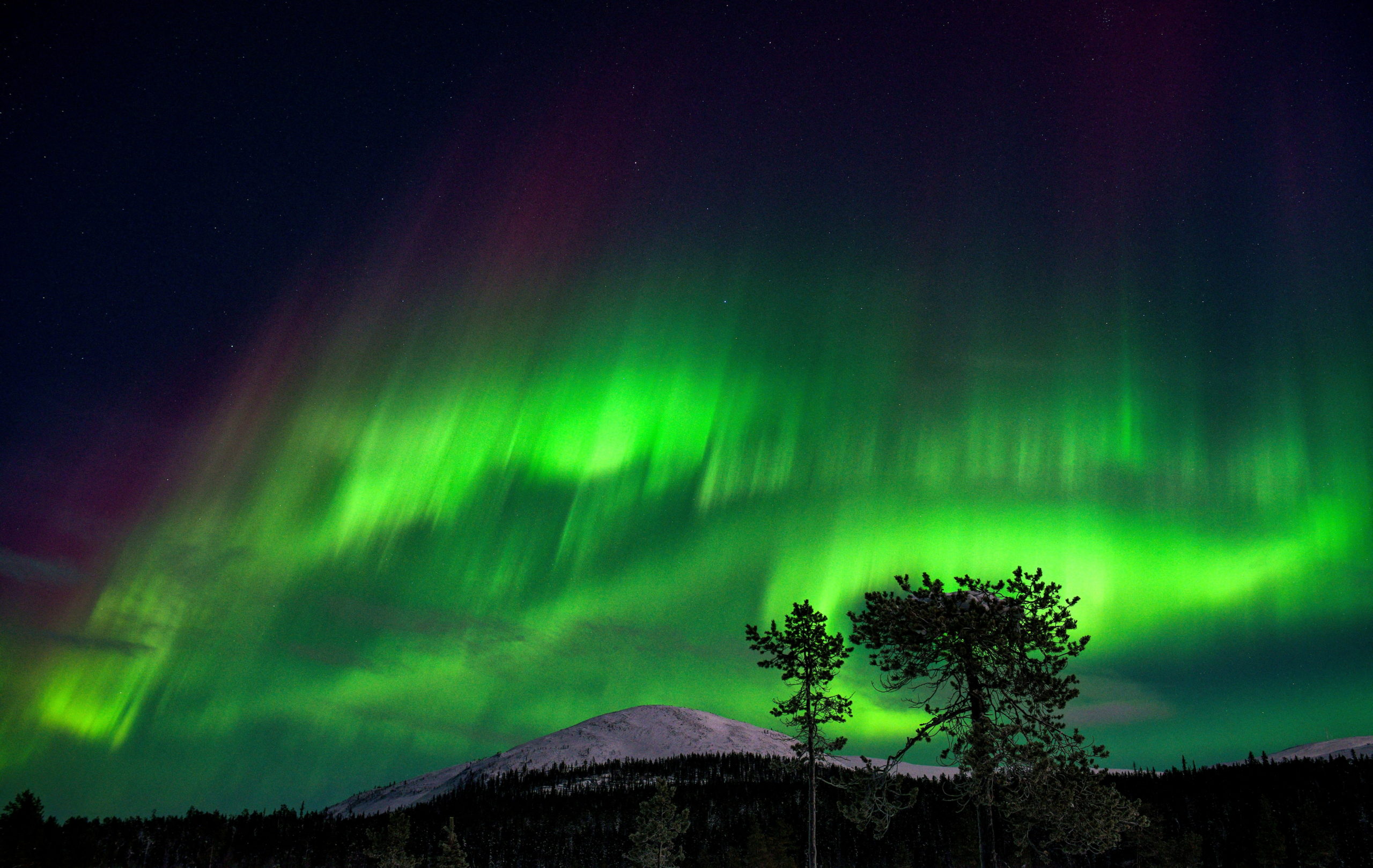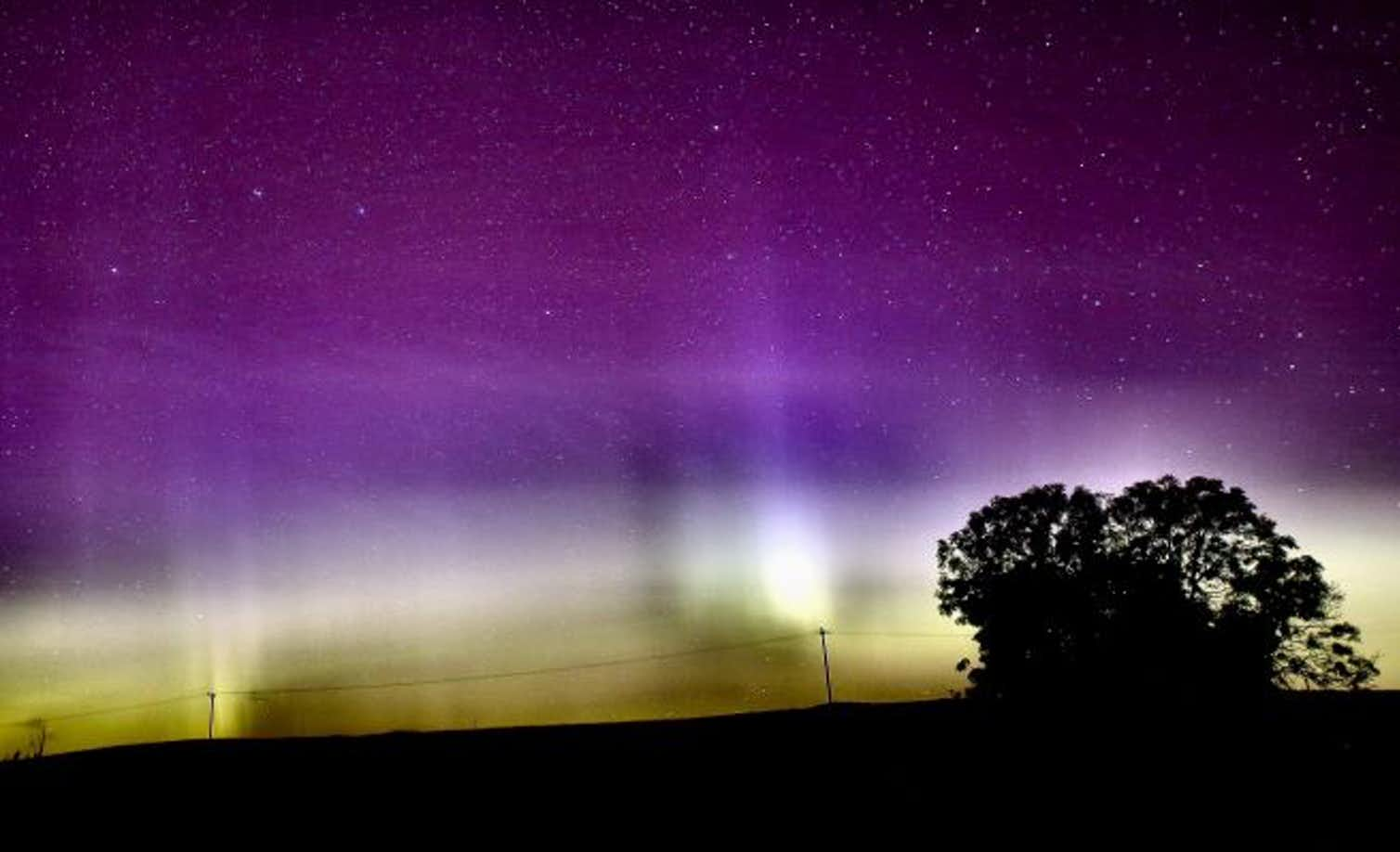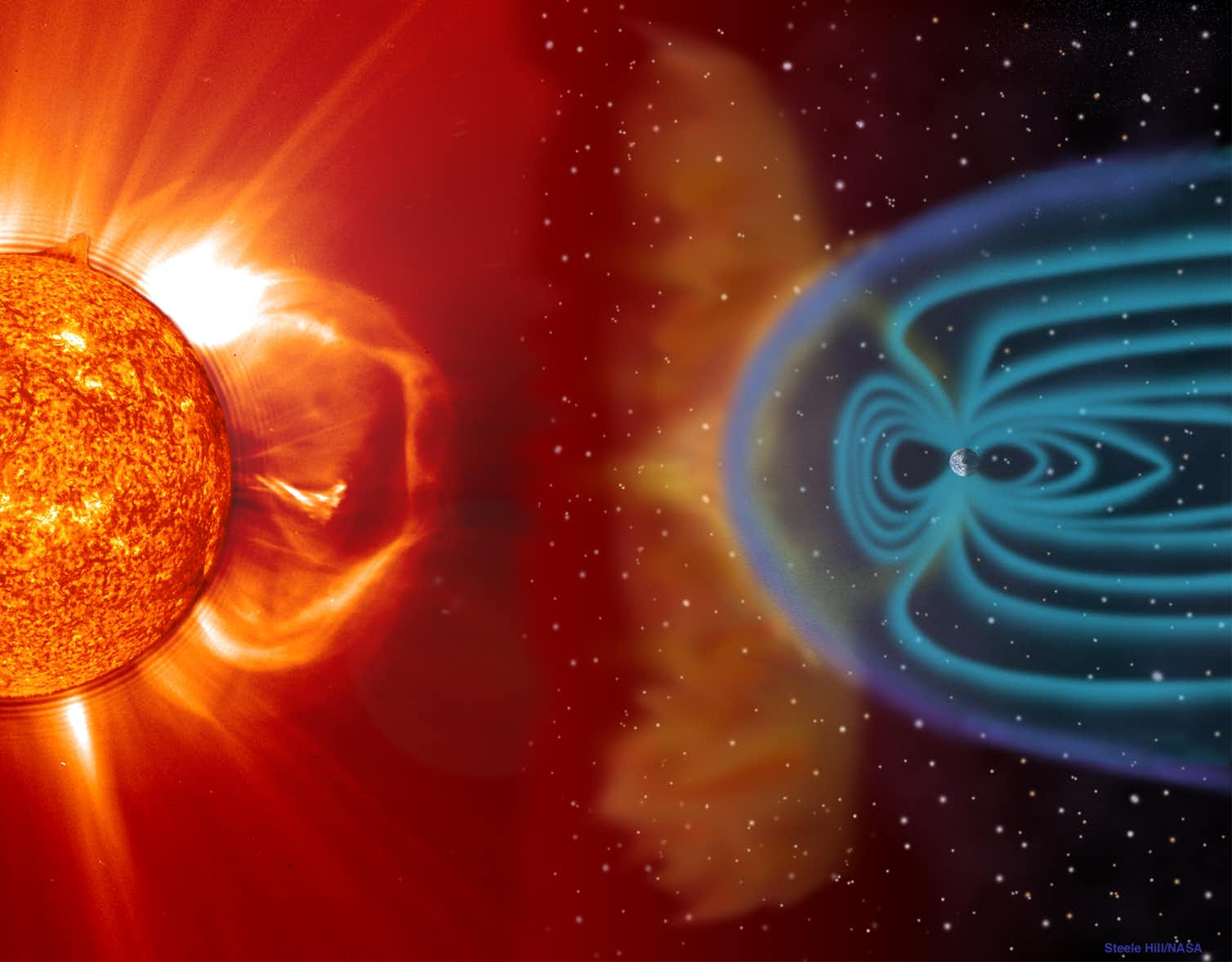Are the northern lights caused by ‘particles from the Sun’? Not exactly
Perhaps part of the aurora's magic lies is that one needs a little of luck to see an especially good display.

What a spectacle a big aurora is, its shimmering curtains and colorful rays of light illuminating a dark sky. Many people refer to aurora as the northern lights (the aurora borealis), but there are southern lights too (the aurora australis). Either way, if you’re lucky enough to catch a glimpse of this phenomenon, it’s something you won’t soon forget.
The aurora is often explained simply as “particles from the Sun” hitting our atmosphere. But that’s not technically accurate except in a few limited cases. So what does happen to create this natural marvel?
We see the aurora when energetic charged particles — electrons and sometimes ions — collide with atoms in the upper atmosphere. While the aurora often follows explosive events on the Sun, it’s not quite true to say these energetic particles that cause the aurora come from the Sun.
Earth’s magnetism, the force that directs the compass needle, dominates the motions of electrically charged particles in space around Earth. The magnetic field near the surface of Earth is normally steady, but its strength and direction fluctuate when there are displays of the aurora. These fluctuations are caused by what’s called a magnetic substorm — a rapid disturbance in the magnetic field in near-Earth space.

To understand what happens to trigger a substorm, we first need to learn about plasma. Plasma is a gas in which a significant number of the atoms have been broken into ions and electrons. The gas of the uppermost regions of Earth’s atmosphere is in the plasma state, as is the gas that makes up the Sun and other stars. A gas of plasma flows away continuously from the Sun: this is called the solar wind.
Plasma behaves differently from those gases we meet in everyday life. Wave a magnet around in your kitchen and nothing much happens. The air of the kitchen consists overwhelmingly of electrically neutral atoms, so it’s quite undisturbed by the moving magnet. In a plasma, however, with its electrically charged particles, things are different. So if your house was filled with plasma, waving a magnet around would make the air move.
When solar wind plasma arrives at the earth it interacts with the planet’s magnetic field (as illustrated below — the magnetic field is represented by the lines that look a bit like a spider). Most of the time, plasma travels easily along the lines of the magnetic field, but not across them. This means that solar wind arriving at Earth is diverted around the planet and kept away from the Earth’s atmosphere. In turn, the solar wind drags the field lines out into the elongated form seen on the night side, called the magnetotail.

(SOHO / ESA & NASA)
Sometimes moving plasma brings magnetic fields from different regions together, causing a local breakdown in the pattern of magnetic field lines. This phenomenon, called magnetic reconnection, heralds a new magnetic configuration, and, importantly, unleashes a huge amount of energy.
These events happen fairly often in the Sun’s outer atmosphere, causing an explosive energy release and pushing clouds of magnetized gas, called coronal mass ejections, away from the Sun (as seen in the image above).
If a coronal mass ejection arrives at Earth it can in turn trigger reconnection in the magnetotail, releasing energy that drives electrical currents in near-Earth space: the substorm. Strong electric fields that develop in this process accelerate electrons to high energies. Some of these electrons may have come from the solar wind, allowed into near-Earth space by reconnection, but their acceleration in the substorm is essential to their role in the aurora.
These particles are then funneled by the magnetic field towards the atmosphere high above the polar regions. There they collide with the oxygen and nitrogen atoms, exciting them to glow as the aurora.
Now you know exactly what causes the northern lights, how do you optimize your chances of seeing it? Seek out dark skies far from cities and towns. The further north you can go the better but you don’t need to be in the Arctic Circle. We see them from time to time in Scotland, and they’ve even been spotted in the north of England — although they’re still better seen at higher latitudes.
Websites such as AuroraWatch UK can tell you when it’s worth heading outside. And remember that while events on the Sun can give us a few days warning, these are indicative, not foolproof. Perhaps part of the magic lies in the fact that you need a little bit of luck to see the aurora in all its glory.
Alexander MacKinnon is an honorary research fellow in physics and astronomy at University of Glasgow.
This article is republished from The Conversation under a Creative Commons license. Read the original article.